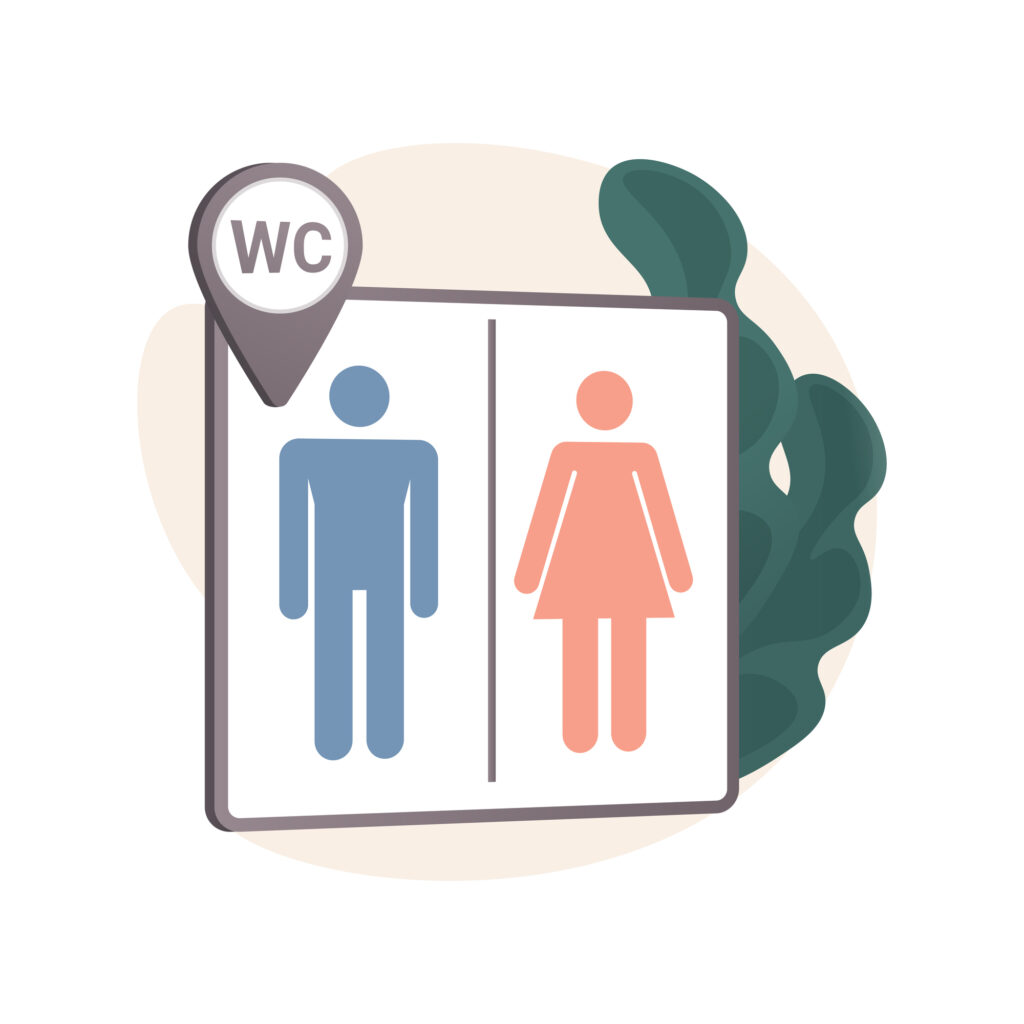 Maintaining clean and pleasant restrooms is essential to a productive and positive workplace. These spaces are often overlooked but can leave a lasting impression on employees, customers, and other visitors. A fresh and sanitary restroom not only contributes to hygiene but also promotes well-being, reduces absenteeism, and fosters a more professional atmosphere.
Maintaining clean and pleasant restrooms is essential to a productive and positive workplace. These spaces are often overlooked but can leave a lasting impression on employees, customers, and other visitors. A fresh and sanitary restroom not only contributes to hygiene but also promotes well-being, reduces absenteeism, and fosters a more professional atmosphere.
In this article, we’ll explore several practical ways to keep workplace restrooms fresh, from regular cleaning schedules to efficient restroom layouts, all while considering the impact of employee satisfaction and hygiene.
1. Establish a Routine Cleaning Schedule
A clean restroom starts with consistent maintenance. It’s crucial to create a regular cleaning schedule that includes daily, weekly, and monthly tasks. Employees or cleaning services should clean and disinfect key areas such as toilets, sinks, floors, and doorknobs multiple times a day, especially during high-traffic periods. A clear checklist ensures that nothing is overlooked, and the restroom remains fresh throughout the day.
In addition to surface cleaning, it’s important to ensure that waste bins are emptied regularly and the restroom is replenished with necessary supplies such as toilet paper, soap, and hand towels. Setting up a feedback system where employees can report issues helps to ensure that the cleaning schedule is followed thoroughly.
2. Implement Proper Ventilation
Restrooms often struggle with odors, and poor ventilation can exacerbate the issue. Adequate airflow helps maintain a fresh atmosphere and prevents the build-up of moisture and unpleasant smells. Make sure your restrooms are equipped with high-quality ventilation systems that exchange stale air for fresh, clean air.
Consider installing exhaust fans that run continuously or are activated when the light is turned on. Check these systems periodically to ensure they are working efficiently. Additionally, if your restrooms do not have windows, installing air purifiers can also be a helpful addition to promote better air quality.
Additionally, when it comes to restroom doors, the choice of stall door design can affect hygiene and ease of use. Inswing vs outswing stall door options offer different benefits in terms of space and cleanliness. Inswing doors are often more space-efficient because they open inward and don’t block the aisle. However, outswing doors provide better airflow and can keep surfaces cleaner by avoiding direct contact with walls or other fixtures.
3. Keep Supplies Well-Stocked
Nothing detracts from the user experience in a restroom more than running out of essential supplies. Regularly check the stock of toilet paper, soap, paper towels, and air fresheners to ensure they are always available. Installing automatic restocking systems or notifying staff when supplies are low can help maintain a smooth flow.
Additionally, consider stocking high-quality, eco-friendly products. Sustainable toilet paper and hand soap not only show your company cares about the environment, but they can also contribute to a cleaner and healthier restroom environment.
4. Incorporate Smart Design Features
A well-designed restroom goes beyond just cleanliness; it considers both function and aesthetics. Proper design can make the space feel more welcoming and comfortable. When planning or redesigning a restroom, consider the following design features:
- High-quality finishes: Select materials that are easy to clean and resistant to stains and moisture. Ceramic tiles, stainless steel, and durable plastic can be good options.
- Ample lighting: Bright lighting improves visibility and gives the space a clean, well-maintained appearance. Motion sensors that turn on lights automatically are an energy-efficient option.
- Privacy and comfort: Ensure that partitions are high enough to give users a sense of privacy, and consider providing ample space around toilets and sinks to reduce congestion and make the restroom feel less cramped.
- Door swing. The choice of stall door design can affect hygiene and ease of use. Inswing vs outswing stall door options offer different benefits in terms of space and cleanliness. Inswing doors are often more space-efficient because they open inward and don’t block the aisle. However, outswing doors provide better airflow and can keep surfaces cleaner by avoiding direct contact with walls or other fixtures.
- Fixtures and fittings. Fixtures should be easy to clean and resistant to bacteria accumulation. For instance, hands-free faucets, soap dispensers, and paper towel dispensers help to reduce touchpoints, making it easier to maintain a sanitary environment.
A well-thought-out restroom design can help improve both functionality and appearance, leading to a more pleasant experience for everyone.
5. Promote a Culture of Hygiene
Ultimately, workplace restrooms require cooperation from all employees to remain clean and sanitary. Promoting a culture of hygiene and cleanliness in the workplace can encourage employees to take responsibility for maintaining the restroom. Clear signage can serve as a gentle reminder to clean up after themselves, and placing guidelines for proper restroom etiquette can help prevent issues like overflowing trash cans or soiled counters.
Additionally, a team of restroom champions can be designated to oversee cleanliness standards. These individuals can conduct regular inspections, report any issues, and offer suggestions to improve the overall environment.
For more tips on improving workplace hygiene, consider visiting Occupational Safety and Health Administration (OSHA).
6. Utilize Odor Control Methods
Unpleasant odors can make an otherwise clean restroom feel uncomfortable. To control odors, consider using air fresheners, either automatic or manual. There are several methods available, from aerosol dispensers to gel and essential oil diffusers. Be mindful of the strength of the scent, as overly powerful fragrances can be overwhelming.
For a more sustainable approach, consider investing in odor-neutralizing products that neutralize rather than just mask smells. Additionally, cleaning the trash bins and keeping the drains clear of any clogs can help avoid any unpleasant odors.
7. Regularly Inspect and Update the Space
Over time, even the best-maintained restrooms can show signs of wear and tear. It’s important to regularly inspect the space for damage such as leaks, cracked tiles, or broken fixtures. Replacing worn-out equipment and updating outdated design elements ensures the restroom remains functional and visually appealing.
Routine checks can also identify potential issues with plumbing or water pressure, which can directly affect cleanliness. Updating your restroom space periodically to meet employee needs and maintain a fresh appearance helps ensure long-term success.
And follow the law. For example, discarded feminine hygiene products fall within the definition of regulated waste and must be disposed of properly. Waste containers into which these products are discarded must be lined with a plastic or wax paper bag and those responsible for handling the contents these containers should do so with suitable gloves.
Conclusion
A clean and fresh restroom is essential to maintaining a positive and productive workplace environment for your employees, customers, and others who come to your premises. By establishing a routine cleaning schedule, promoting good ventilation, selecting easy-to-clean fixtures, and encouraging a culture of hygiene, you can ensure that your restroom remains sanitary and welcoming. Combining proper design with regular inspections will also keep your restrooms functioning at their best.
Find additional information about the importance of a clean workplace in this list of blogs.


